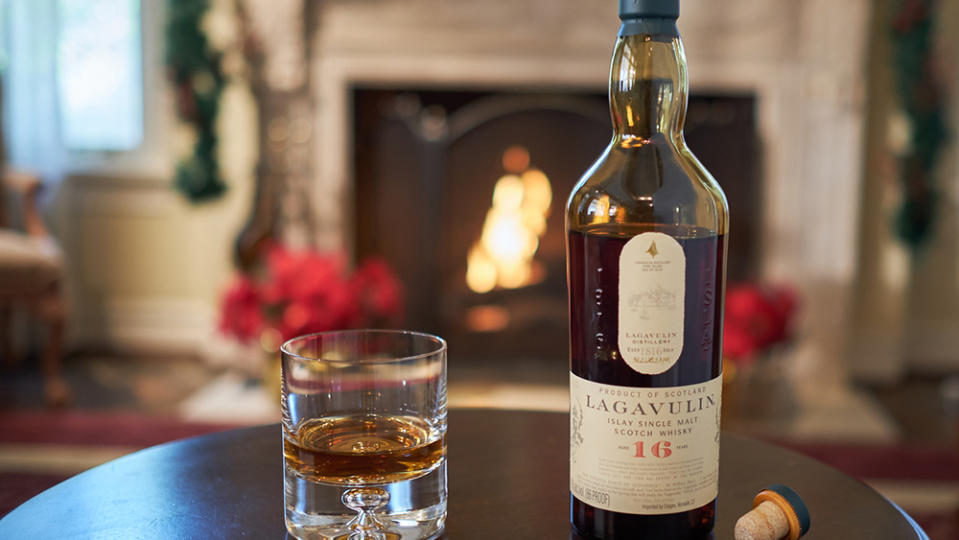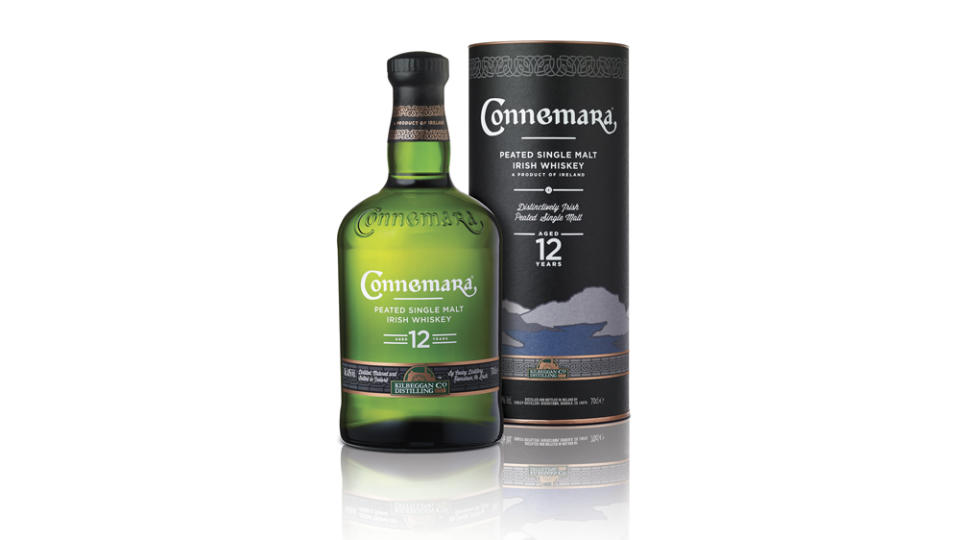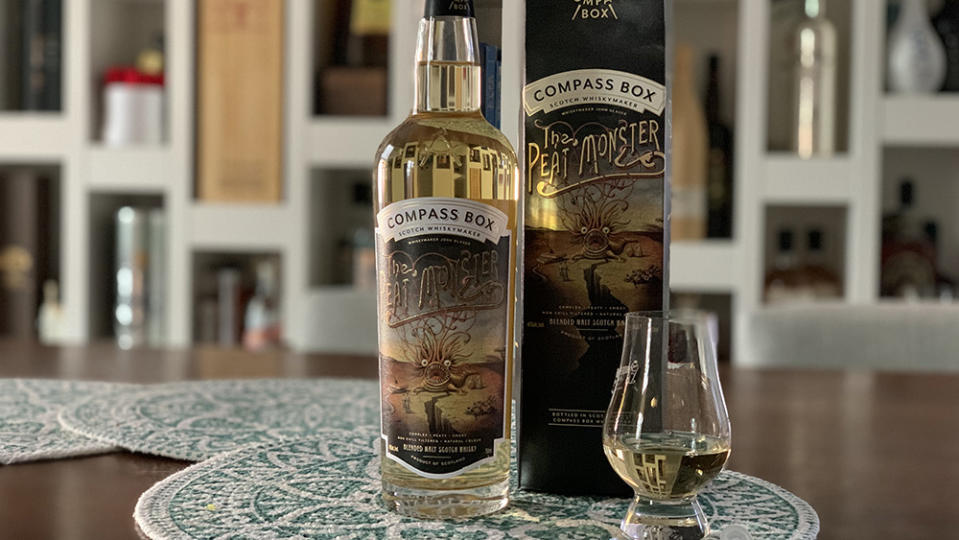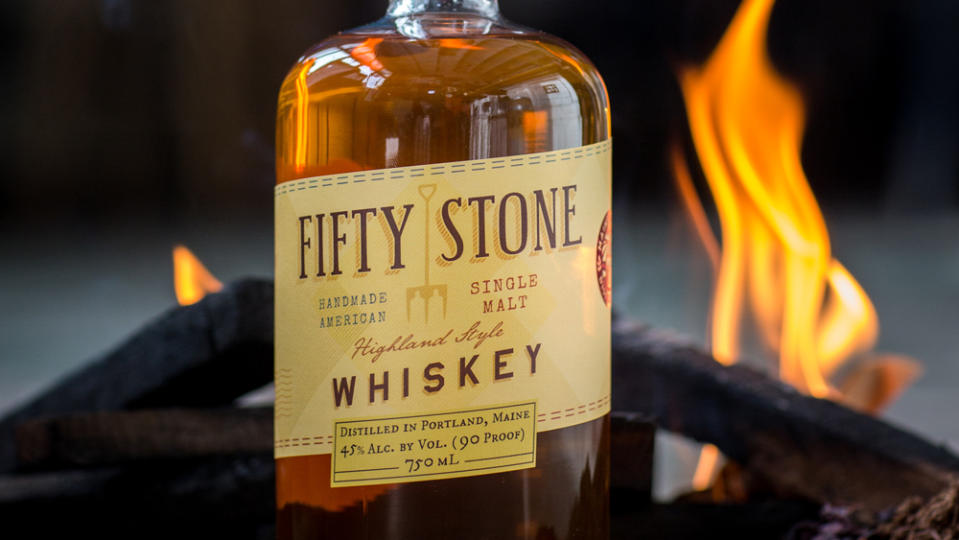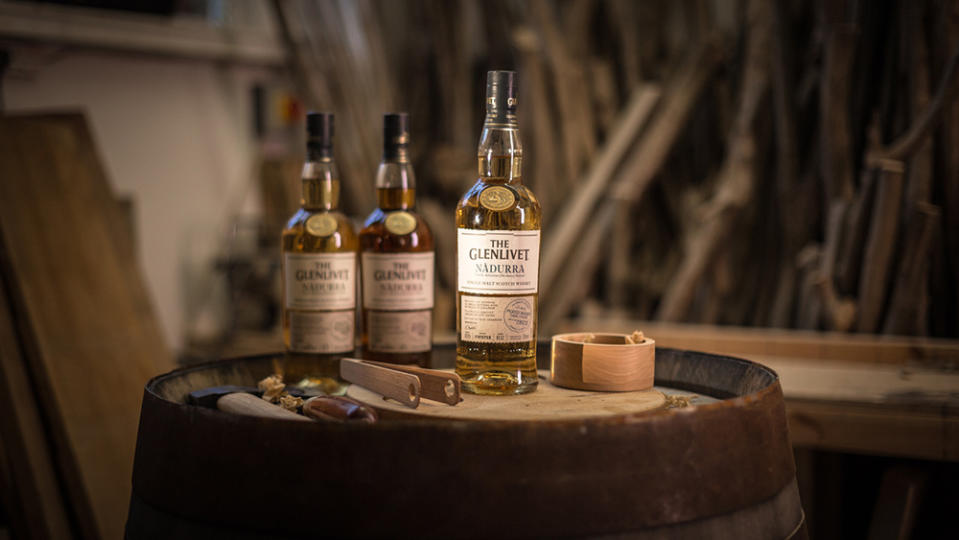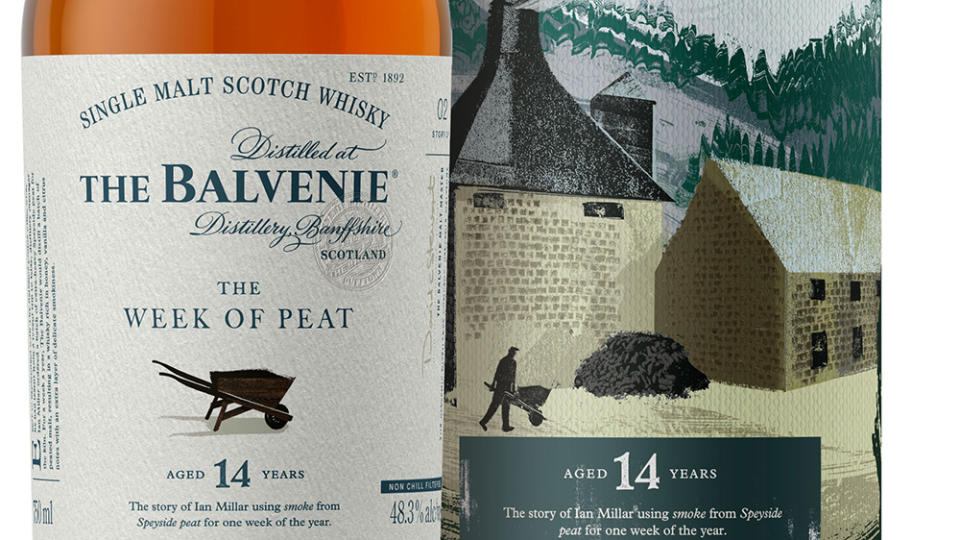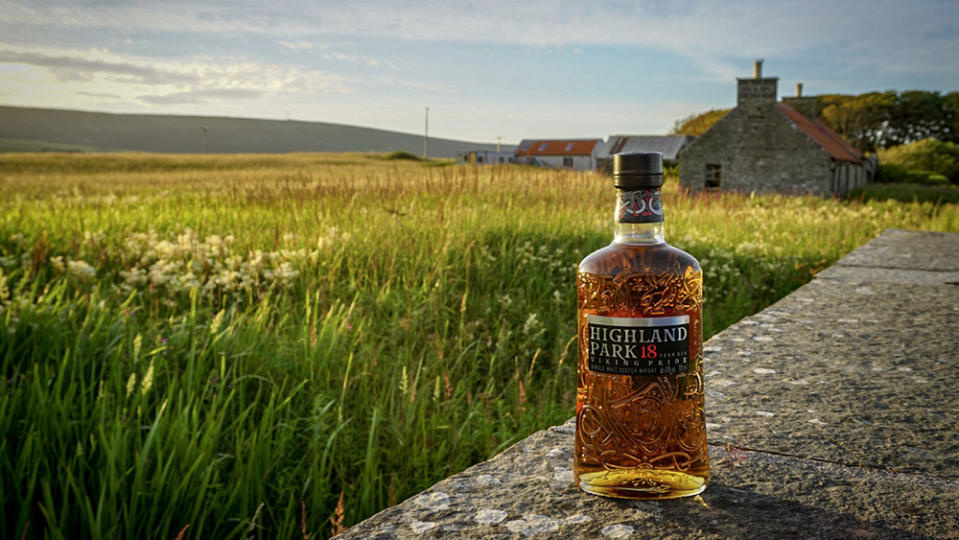The 15 Best Peated Whiskies to Buy Right Now

Peated whiskies seem to be a love-or-hate deal, with little room for indifference. The best-known expressions come from the rocky shores of Islay, off the southwest coast of Scotland—but producers in other regions of Scotland and, increasingly, around the globe are capitalizing on the growing fan base. Aficionados love the strong smoky flavors and the briny notes of seaweed and iodine, reminiscent of a smoldering campfire by the shore. Naysayers say that it’s like drinking an ashtray or that it smells like a tire store. But depending on where and how the whiskies are made, peated malts encompass a whole range of smoky flavors, along with undercurrents running the gamut from ripe pears to dried mushrooms.
Peat makes its entrance at the very beginning of the whisky-making process, before distillation, when barley is roasted, or malted, to stop the seeds from sprouting fully. In the 19th and early 20th centuries, the fuel used for malting was usually peat, which burns like coal and is abundant throughout Scotland. In the years after World War II, most Scottish distilleries switched over to other, cleaner fuel sources, but a few kept up the peaty tradition. And in recent decades, as single malt mania took hold and whiskyphiles started searching out bolder and more distinctive whiskies, the smoky stuff—the more intense the better—gained a rabid cult following that makes brands like Bruichladdich, Lagavulin and Ardbeg some of the most desirable of all Scotches.
More from Robb Report
Taste Test: This New Indian Whisky Reinvigorates the Tired Trend of Cask Finishing
The Macallan Is Selling an 81-Year-Old Single Malt for $125,000 a Bottle
Bentley Is Running an Extraordinary 5-Day British Road Trip With a Stop at the Macallan
While taste is subjective, there is a way to objectively measure peat in whisky, and that’s by measuring the phenol, the chemical that gives a whisky its characteristic smoky notes. A lightly peated malt can have 10 to 15 ppm (phenol parts per million); while one that’s heavily peated can have about 40 to 60. The most heavily peated whisky ever recorded, Bruichladdich’s Octomore 8.3, released in 2017, measured a completely bonkers 309 ppm. But age and distilling techniques all have an effect on how a whisky actually tastes, no matter how peaty it looks in a lab.
For our list of the ones to try, we’ve selected plenty of whiskies from Islay, along with other regions of Scotland and even a few international offerings. The peat levels ranging from dainty to massive, and flavor profiles, like the whiskies’ provenance, are all over the map.
Stauning Smoke Danish Whisky
Denmark isn’t known for its whisky, but Stauning, founded in 2009, has made a splash among aficionados worldwide. Stauning Smoke uses ingredients sourced exclusively from within a few miles of the distillery and that includes the peat used to malt the barley. There’s terroir in peat—since it’s composed of partially decomposed vegetation, what grows in the area affects the aroma and the flavor of the peat smoke. Unlike the heavy maritime notes of Islay peat, the smoky aromas here, while still dominant, are gentler by comparison, thanks to the mosses and shrubs that make up Danish peat. It’s even a tad floral, courtesy of the heather that’s also used to smoke the grains. On the palate, Stauning Smoke’s sweet creaminess and slightly tart lemony flavor are balanced by sharp, dry woody notes. While it shares some of the flavor profiles of Scotch whisky, it’s completely distinctive at the same time. Hopefully this is a harbinger of Nordic whiskies to come.
Lagavulin 16 Year Old
Islay is the center of the peated whisky world, and most fans regard Lagavulin 16 as the quintessential Islay malt. It’s been a licensed distillery since 1816, and while it makes several other expressions, the flagship 16 is the place to start. It’s got everything Islay fans love and newbies fear—lots of ashy smoke (35 ppm) and salty sea air, some seaweed and iodine. But beneath the peaty surface there’s fruity sweetness, vanilla and burnt caramel, with a healthy dash of oak for balance. Not just a star among Islay whiskies, but of single malts worldwide.
Connemara 12 Year Old Peated Single Malt Irish Whiskey
Peated barley imported from Scotland adds an intriguing dimension to what’s otherwise a classic whiskey in the light and sweet Irish style. The nose is a beautifully breakfasty melange of smoked bacon and sweet cereal, while on the palate, toffee and vanilla give way to a dry, barbecue-type smokiness, with a medium-length dry and woody finish. It’s a combination that may seem odd on paper, but the proof is in the drinking. Bottled at a buoyant 80 proof, it may be a little light for devotees of brawnier Islay malts, but it’s a terrific gateway into the world of peat for Irish whiskey fans, and suitably substantial for peat aficionados looking for a change of pace.
Bruichladdich Port Charlotte Heavily Peated 10 Year Old
Bruichladdich has stood out among its Islay counterparts since the distillery was reopened in 2001 under iconoclastic distiller Jim McEwen (today it’s run by his successor, Adam Hannett). From using locally grown barley, to bottling their whiskies far younger than what was considered acceptable, to producing the most heavily peated malts in the world by an order of several magnitudes, Bruichladdich has repeatedly broken the mold and made delicious whiskies while doing so. Port Charlotte isn’t as over-the-top as the brand’s famed Octomore expressions, and this 10 Year Old bears a downright conventional age statement. But Bruichladdich’s take on a classic Islay malt is a classic in its own right. Bottled at 50 percent ABV, the intense spice and dry campfire smokiness are tempered by sweet caramel, dark fudge, burnt sugar and tangy citrus, with just a hint of medicinal amaro—think Fernet—on the finish. There’s plenty of smoke for peat lovers to wallow in, of course, but the many layers of flavor reward repeated tasting.
Compass Box Peat Monster 2019
Blended whiskies are usually given short shrift by single malt snobs, but Compass Box’s superior craftsmanship and transparency about what’s in the blends have won accolades from even the haughtiest of connoisseurs. This configuration of one of the best-known Compass Box expressions debuted in 2019 with a simpler and older blend of malts, consisting almost entirely of Islay stalwarts Caol Ila and Laphroaig. The siblings play beautifully together, with the seaweed and iodine notes of the Laphroaig taking the lead, while the oily, medicinal aspects of Caol Ila play a stellar backup role. Creamy vanilla flavors waft alongside the wisps of smoke. A truly refined peated malt.
Maine Craft Distilling Fifty Stone
Peated American single malts, while still unusual, are becoming more common in the American whiskey landscape. One of the best of the bunch is Fifty Stone, so named because it supposedly takes fifty stone (700 lb.) of barley to make one barrel of whiskey. The barley is malted using locally sourced peat and seaweed for Maine, which imparts an Islay-like brininess to the whiskey, which is bottled at 45 percent ABV. Despite that similarity, however, there’s something about Fifty Stone that evokes the rocky shores of Maine rather than Scotland—perhaps it’s the sweet, bourbon-and-barbecue flavors lurking beneath the smoke and brine. Regardless, this is one of the most distinctive and delicious single malts coming out of New England.
Benriach Smoke Season
Like the Balvenie, BenRiach is a Speyside distillery that uses Highlands peat to make whisky that’s miles away, literally and figuratively, from the briny, peated malts of Islay. Yes, there’s smoke on both the nose and the palate of the limited edition Smoke Season, but it’s a more delicate, gentler smoke—think barbecue instead of campfire. The smoke and the cereal sweetness of the barley are the attention-grabbers, but there are tasty undertones of honey and toffee, as well as a savory hint of meatiness that goes nicely with the smoke. Bottled at a burly 52.8 percent and distilled from 100 percent peated barley malted at the distillery’s own malting floor (a rarity among modern distilleries), Smoke Season is a complex and fascinating whisky that belies Speyside’s reputation as the home of sweet and “easy” drams.
Ardbeg Uigeadail
Next to Bruichladdich’s Octomores, Ardbeg has the peatiest whiskies in all of Scotland, as measured by phenol parts per million. Named after the loch used as Ardbeg’s water source, Uigeadail (pronounced OO-gah-dal) is a bit of a mystery—it doesn’t have an age statement, and while it’s aged at least partly in ex-sherry casks, we don’t know any specifics. But it’s the most popular of Ardbeg’s core range, and with good reason. Peat lovers adore the campfire-in-your-mouth flavors, but there’s a lot of complexity beneath the smoke, where notes of caramel, candied orange peel and dark chocolate lurk.
Bowmore 1966 50 Year Old
Bowmore is Islay’s oldest distillery, having been around since at least 1779. The famed “Black Bowmore,” distilled in 1964 and released in several, increasingly pricey editions since the 1990s, almost singlehandedly kicked off the modern single malt craze that continues unabated to this day. The 1964’s exalted status is justifiable, but this lesser-known sequel, distilled two years later, may be even better. Where half a century in wood will leave most whiskies tasting like a brittle oak stave, a few lucky casks manage to avoid that fate. This miraculous malt, limited to a mere 74 bottles, is intense and fruity, mingling with the Bowmore’s distinctive smokiness—think roasting pineapples on a campfire at the beach. A gorgeous rebuttal to all the naysayers who claim extra-aged whiskies are nothing more than marketing tools.
Laphroaig 25 Year Old Cask Strength
The venerable Islay distillery celebrated its 200th anniversary in 2015, and it’s still going strong, with a never-ending stream of new, limited-edition expressions. Their 10-year-old cask strength is a must-try starter whisky for the peat-curious, but for those who want to move into more rarefied air, the 25-year-old, which makes an appearance every year or two, is worth searching out. Aged in ex-bourbon and Oloroso sherry casks and bottled at cask strength, this spirit is the slightly more delicate and refined than its brawny younger siblings, but there’s still plenty of peaty smoke and spice, along with a supporting cast of light fruit, vanilla and honey. A beautifully balanced whisky.
Glenlivet Nadurra Peated Whisky Cask Finish
The Glenlivet’s sweet, gentle flavor is so at odds with the in-your-face style of typical peated malts that it’s hard to imagine a combination of the two. But Glenlivet and/or peat fans don’t have to imagine. Starting in 2015, as part of its Nadurra series, the distillery has taken its classic whisky, beefed it up to cask strength, and added peat to the mix. Rather than using it during the malting process, however, they employ it during aging, finishing the liquid for up to three years in casks that formerly held heavily peated whisky. The result is a fascinating combination of sweet and smoky, with vanilla and tropical fruits harmonizing with earthy peat. For a cask-strength whisky, it’s surprisingly smooth and creamy, with a dry finish almost devoid of alcoholic heat. A perfect peaty gateway for the uninitiated.
Balvenie Week of Peat 14 Year Old
With its trademark vanilla-and-honey flavor profile, the Balvenie is a quintessential example of a Speyside malt, which is pretty much the opposite of a classic smoke-and-seaweed Islay whisky. But for one week a year, the distillery peats its barley, and its influence is both fascinating and delicious. The Week of Peat employs Highland peat, which is found inland, rather than the maritime Islay peat, and it imparts a more earthy flavor to the whisky. It’s got the bones of a Balvenie, with vanilla, honey and ripe pear notes, but it’s overlaid by a gentle dry smoke that mingles with the other flavors.
Highland Park 18 Year Old: Viking Pride
The winner of countless awards and accolades, Highland Park 18 is made on the island of Orkney—which, as the brand is eager to point out, was settled, and later abandoned, by Vikings centuries before whisky was first distilled there. Viking Pride is aged in both European and American Oloroso sherry casks. The peat smoke mingles with honey, orange, vanilla and surprising earthy mushroom notes to create a seamless whole in which no one flavor dominates. Peat lovers and sherry lovers will be equally delighted by this one.
Talisker 10 Year Old
Made at the only distillery still operating on the Isle of Skye in the northwest of Scotland, Talisker 10 is one of those whiskies that often gets taken for granted because it’s been such a constant presence for so long. The 10-year age statement isn’t particularly sexy—it’s not bottled at a high proof, and even the peat content is pretty low (about one-tenth of the peatiest Octomores). But it’s a perfectly constructed malt that belongs in every serious whisky fan’s liquor cabinet. Crisp bacon, celery salt and ripe red apple evolve into sweet malt and gentle smoke, which lingers on in the long finish. A classic.
Bunnahabhain Toiteach A Dha
Bunnahabhain is known as the Islay distillery that doesn’t peat its whiskies, but there have been exceptions to the rule over the years. Toiteach a Dha is the first peated malt to be added to the brand’s permanent range. Aged in ex-bourbon and sherry casks, vanilla, caramel and dried fruit mix with briny seaweed notes from the peat, along with smoke and a hint of mushroom. It’s a weird combination, but a very tasty one.
Best of Robb Report
Why a Heritage Turkey Is the Best Thanksgiving Bird—and How to Get One
The 10 Best Wines to Pair With Steak, From Cabernet to Malbec
20 Stellar Wines Under $100—and 5 Secrets for How to Find Them
Sign up for Robb Report's Newsletter. For the latest news, follow us on Facebook, Twitter, and Instagram.

